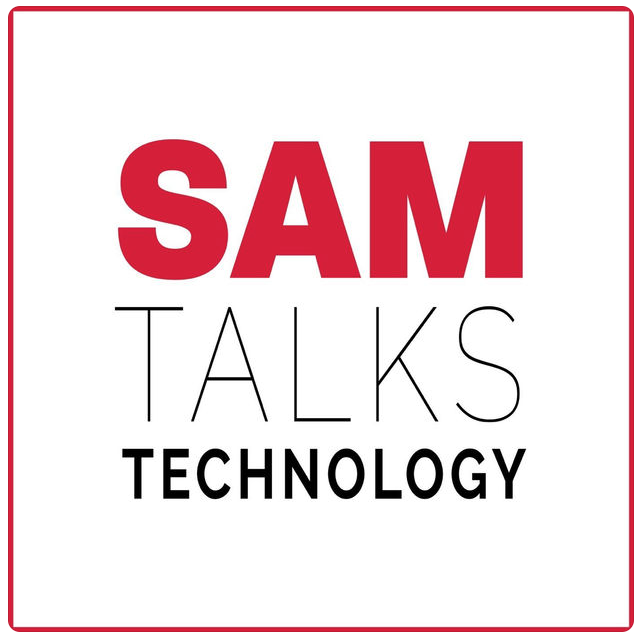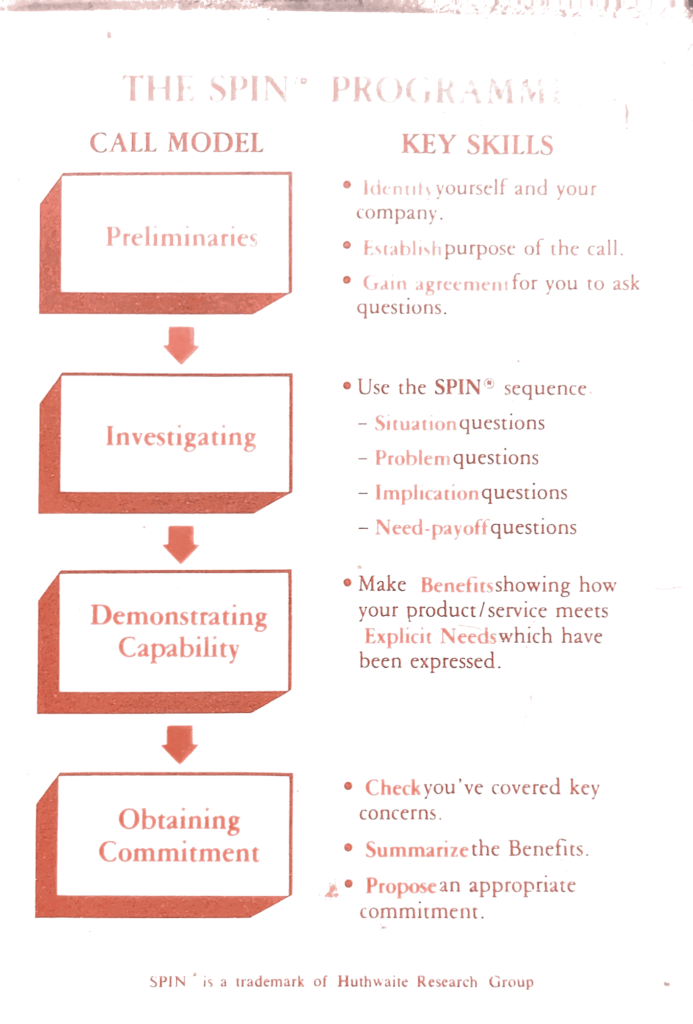
A few days ago I was the latest victim on Sam Sethi’s Marlow FM 97.5 radio show and podcast – Sam Talks Technology (and there’s a Facebook group here). Sam and I go way back to the start of the London social media scene in the mid 2000s and it was a delight to be a guest on his show. His format is to mix technology and personal history, with a smidgen of “Desert Island Disks” thrown in. He splits an hour and a half of chat in to what’s happening now, some history and then the future. The time flew by. He only had a chance to play one of my chosen tunes (the Mary Black with Emmylou Harris, Transatlantic Sessions version of my favourite Sandy Denny song “By The Time it Gets Dark“), and we didn’t get to half the topics we had planned, but it was great. For some reason Sam asked me about SPIN and that got me thinking about useful acronyms and formulae I’ve picked up over the years to help with talking business, presenting and storytelling.
SPIN

What’s SPIN? Well, way back when I came in to the technology industry, straight from University, I was being trained to be a Systems Engineer by IBM. I was lucky enough to be on the first course on SPIN® Selling that they had commissioned from the Huthwaite Research Group. My course was actually taught by Neil Rackham, the founder of Huthwaite and the researcher who had devised the technique. Actually he had analysed the questioning techniques in thousands of sales calls and distilled the ingredients that were most successful in to a model process. It’s an acronym for:
- Situation Questions – to understand the customer’s current situation
- Problem Questions – to identify current problems, issues and difficulties
- Implication Questions – where you tease out the consequences of what those problems cause
- Need-Payoff Questions – where you set up the value and importance of a potential solution

You might iterate around these questions to properly quantify the need and build up the value before you come in with the potential benefits of your solution. As a model it works in all sorts of circumstances. I’ve been using it ever since and I still carry the laminated card (see above and left) that I was given on the course in my wallet to this day (40 years on, but don’t tell anyone)!
So what about those other acronyms and formulae? Whether it’s a long form article, a presentation, an email marketing piece, your next 250 word post on LinkedIn, or 280 characters on Twitter, these will help you be more effective.
The 4 Cs
- Clear
- Concise
- Compelling
- Credible
In your writing, presenting or explaining keep things clear and concise, and make sure your arguments are compelling, with evidence or examples to ensure it’s credible.
The 4 Us
- Useful – Make sure it’s useful to the reader or audience
- Urgent – Provide them with a sense of urgency
- Unique – Focus on your main benefit and convey the idea that it is somehow unique
- Ultra-specific – Do all of the above in an ultra-specific way for this audience or reader
The Us are universal, but if you’ve got to get your message across quickly, like on social media, maybe this is where you start.
AIDA (Attention – Interest – Desire – Action)
- Attention – Grab their attention
- Interest – Make sure what you are saying is interesting, fresh and appealing
- Desire – Make them want the idea or service with proof that it does what you say
- Action – You must have a call to action – make sure they know what you want them to do next
This has been a staple approach of copywriting, advertising and marketing for a long time, in fact since it was developed by the American businessman, E. St. Elmo Lewis, in 1898!
FAB (Features – Advantages – Benefits)
- Features – Explain what your product or idea can do
- Advantages – Explain how it helps them
- Benefits – Translate what that really means for the audience or reader
This is deceptively simple, should be obvious. However, it amazes me how many people in our technology space spend so much time explaining the features and ingredients of their products, and not enough time on the benefits and business outcomes that their solution, concept, or idea could achieve.
BAB (Before – After – Bridge)
- Before – Show them the world before your idea or solution
- After– Help them imagine what the world would be like after your solution
- Bridge – Present your solution as a bridge between the two worlds
Describe a problem, describe a world where that problem doesn’t exist, and then take them on the journey to get them to the new place. People are motivated to take action to avoid pain, or look for pleasure. Psychologists like Sigmund Freud have explained how we tick, and you can use that. The added benefit of this approach is the shift in focus to benefits and outcomes, not products and features.
PAS (Problem – Agitate – Solve)
- Identify a problem
- Agitate the problem
- Solve the problem
Here’s a formula that I’ve seen on Copyblogger, which is another great resource for writing ideas. Identify the reader or the audiences’s pain point. Go round the loop a few times to increase the discomfort. Deliver a solution.
Storytelling
The core issue here is storytelling. Whether it’s 280 characters on Twitter, 1,200 words in a blog post, 50,000 words for that book you are going to write, or the outline of your next podcast, we have to get better at it. All of these formula will help you get your message across more effectively, whatever job you do. It will also help you to think in terms of the basics of any story. Christopher Booker wrote The Seven Basic Plots: Why We Tell Stories in 2004. It contains a Jungian-influenced analysis of stories and their psychological meaning and the key thesis of the book is that all literature, scripts and stories are structured in terms of 7 archetypal plots:
- Overcoming the Monster
- Rags to Riches
- The Quest
- Voyage and Return
- Comedy
- Tragedy
- Rebirth
I’d recommend you learn more about the art of storytelling, and of how to be a better writer and communicator. My own writing mentor is my friend David Tebbutt. He’s the best writer and editor that I know. I won’t steal his thunder here. You can download his writing tips from his website, and you should definitely watch this playlist of 9 videos he did with Alison O’Leary called Develop your Business Writing Skills. Like so many things these days, you can learn it free on YouTube!
I’ll leave you with David’s own 3 Bs maxim on writing:
- Be clear. Be credible. Be read.
If you want help with telling your technology story, or finding your way through current business landscape, please contact us, or join the conversation below.

That was a fun piece as well as being informative. Many thanks for the mention at the end.